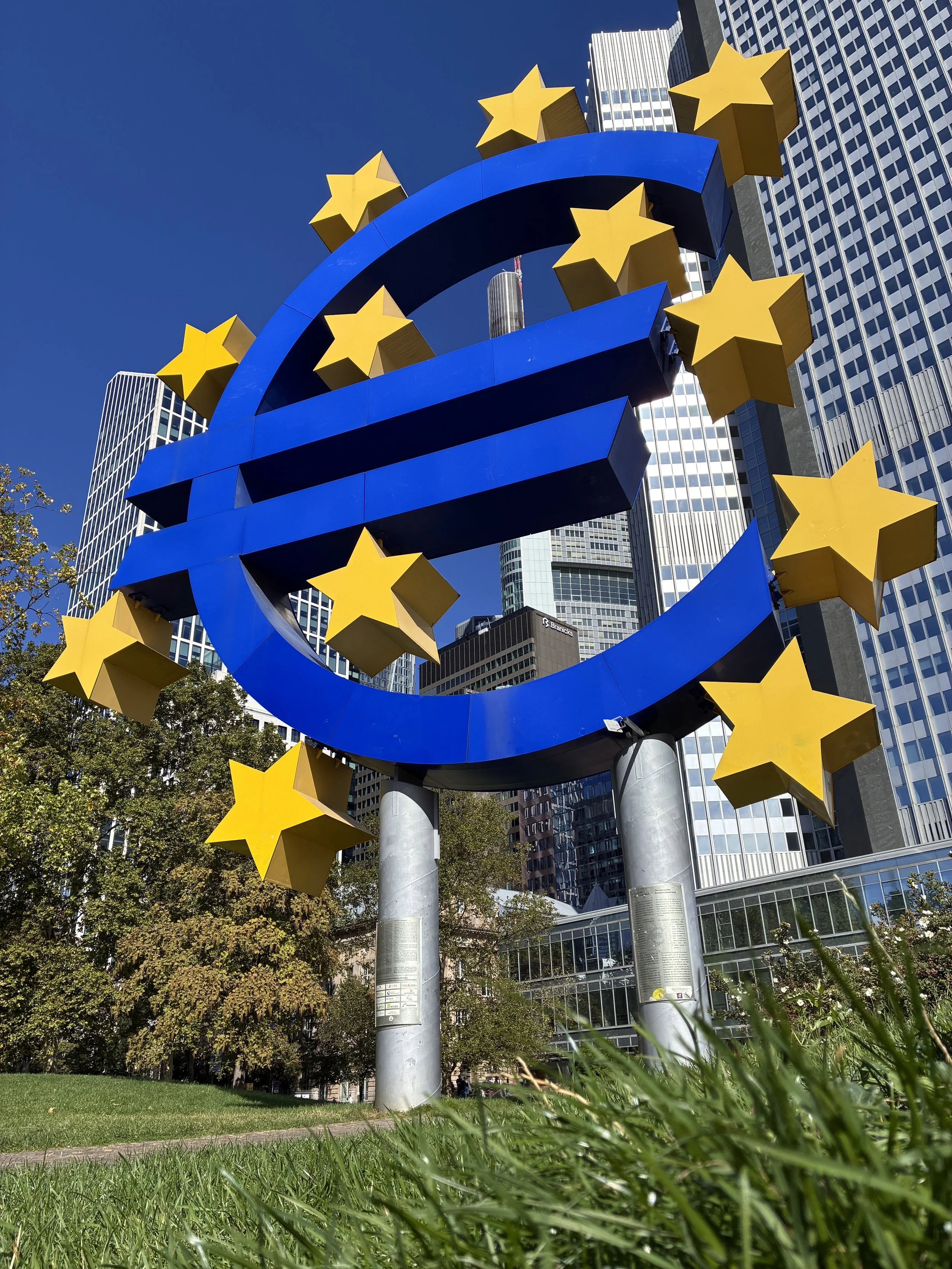Katter.Germany: The Euro-Skulptur
Katter.[Country] is a travel column based on KC’s adventures around the world. Today, we are in Frankfurt Am Main!
January 1st, 2002 is when the euro currency officially made its way into circulation, and Frankfurt - the seat of the European Central Bank - along with other financial titans like Deutsche Bank following in tow, raised the symbol of the unified currency of the European Union, the Euro-Skulptur.
The Euro-Skulptur in September 2025
On the edge of Willy-Brandt-Platz sits a 14 meter (46 feet) tall euro symbol made of 50 tons, one of the most photographed sculptures in Frankfurt is one celebrating the European Union 🇪🇺. The sculpture was built by Ottmar Hörl and has two renditions — one sculpture was on display at the Frankfurt Airport until its dismantling in 2018. Then the other was purchased €350,000 by the Frankfurter Kultur Komitee (FraKK) and placed right here in the center of the city, where the former headquarters of the European Central Bank was located before moving to their current headquarters in East Frankfurt in 2014.
The sculpture is a mixture between the unifying currency of the EU (the euro €) and the design of the EU flags which dawns 12 stars aligned in a circle, signifying the harmony of the Union. Despite the EU now welcoming 27 countries into the Union, the number 12 is commonly associated with completion, perfection, and harmony. The combination of blue and gold has been used historically for heraldry.
Despite some Frankfurters seeing this sculpture as an eyesore and others as an iconic symbol, as a silly tourist I thought that this was absolutely cool to stumble upon deserves some more love from visitors. Throughout my travels in Europe the past few weeks I have experienced many different cultures and walks of life, however the one unifying thing that all of the EU has IS the euro! From Danke, to Merci, to Thank you, the euro is always the core of bridging the European Union through conversation, transaction, and streamlined currency. Today, 20 countries are a part of the Eurozone where the euro is the main form of currency.
Now, originally the Euro-Skulptur had 330 neon light strips that illuminated the piece, which was quite costly and neon is getting increasingly difficult to maintain. The Euro-Skulptur now is lit by LED after a €60,000 renovation in 2015 ordered by the FraKK, commissioning the Frankfurt’s craftsmen’s guild and local apprentices for the facelift.
As of September 2025, the Euro-Skulptur still shines bright for all to see, and is a neat landmark to stumble upon as you explore Frankfurt, the financial hub of continental Europe. The euro continues to unify all who make their way into the EU, and the Euro-Skulptur celebrates the financial strength of Frankfurt, and a lovely reminder of how culture and commerce of all countries can coincide in an allegiance.
Long live the Euro-Skulptur. 🇪🇺
Enjoy your adventures in Germany!
Check back for more Katter.[Country] to follow my world of adventures, from my backyard to Berlin — enjoy my work? Consider donating to Katter.haus to keep this publication pay-wall free and to allow me to explore more of the world.

